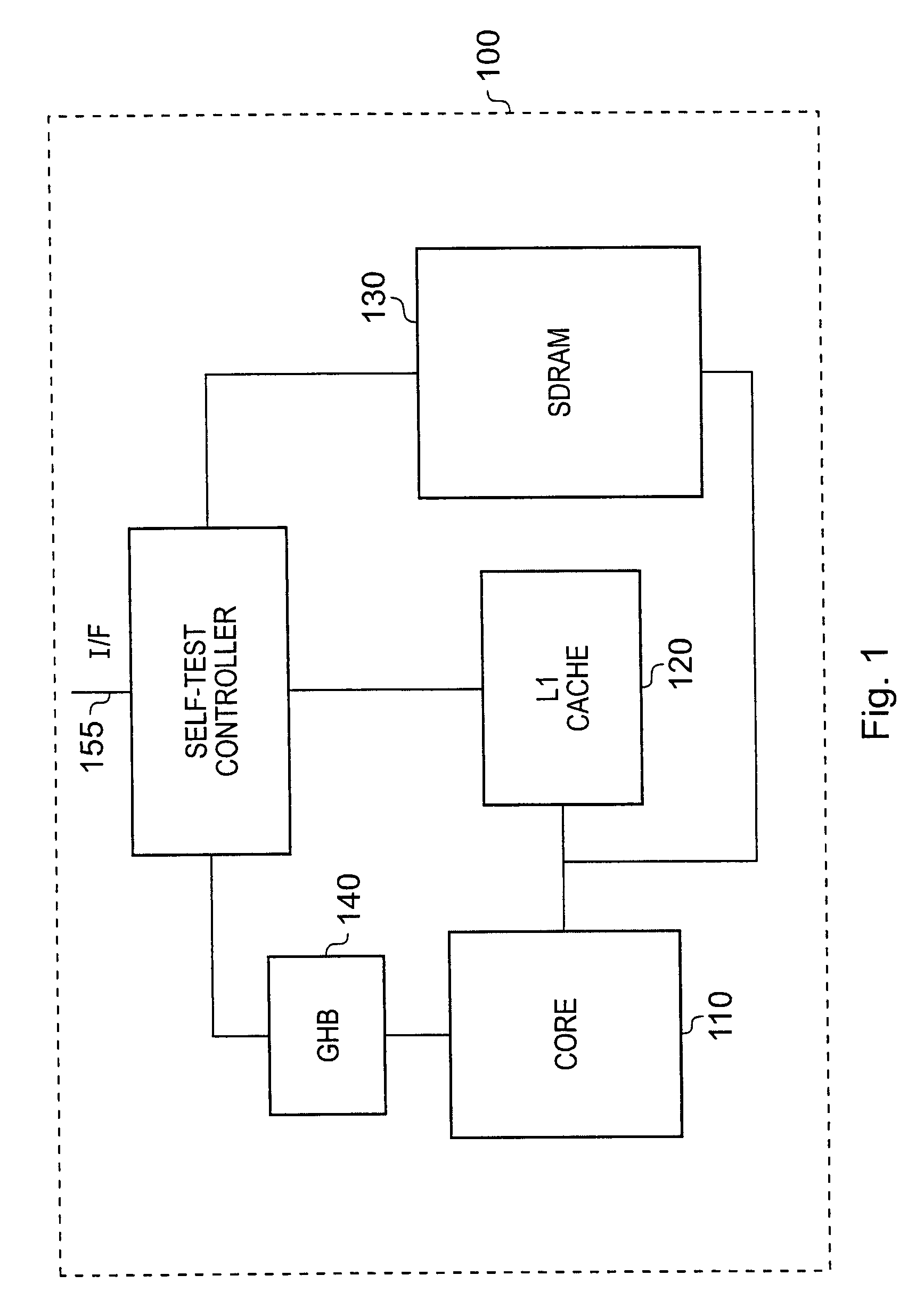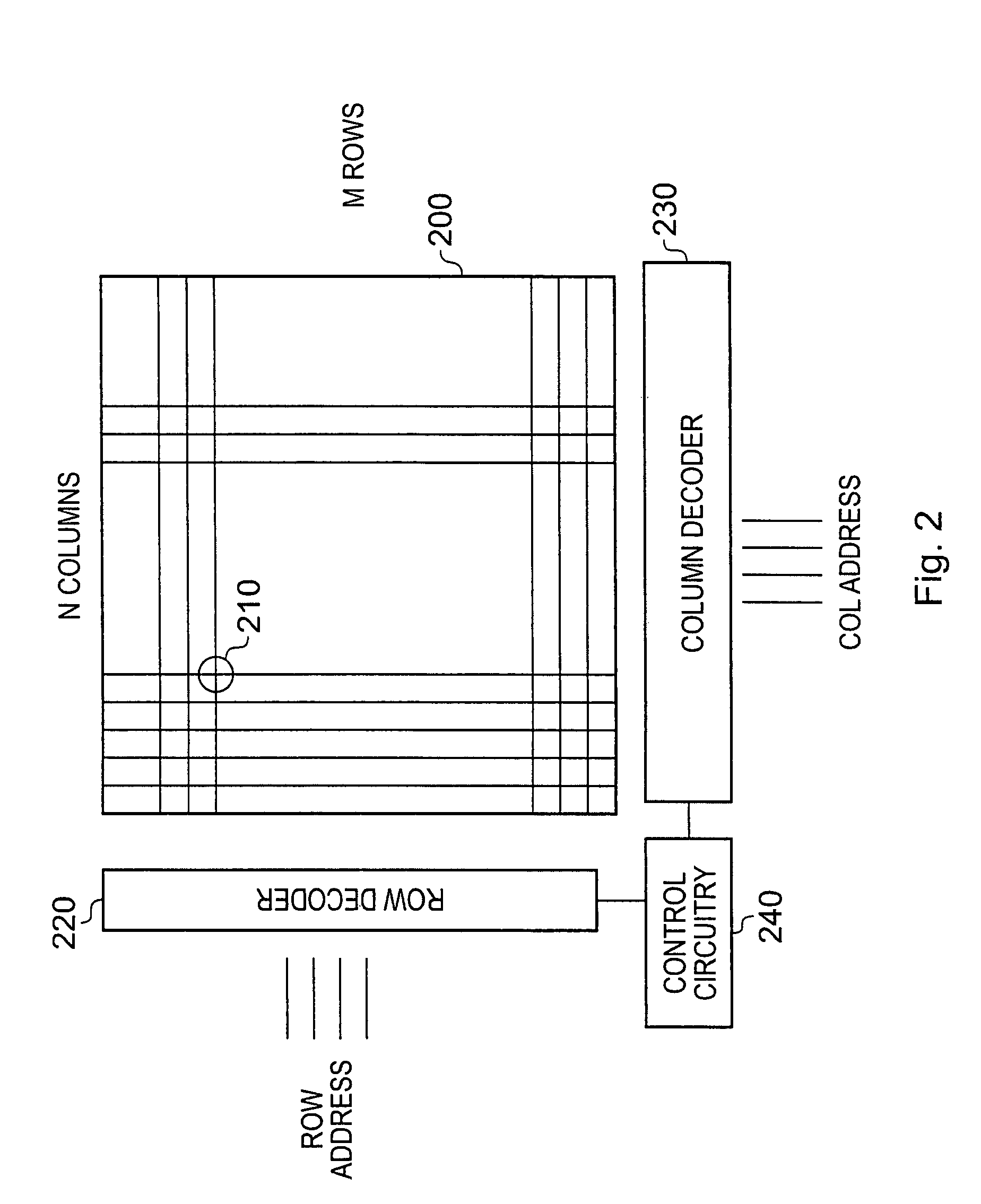Method and apparatus for memory self testing
a memory and self-testing technology, applied in the field of data processing systems, can solve the problems of loss of test quality, difficulty in providing a generic memory self-test system, and inability to properly implement self-test algorithms such as a “bitline stress test” or a “checkerboard test” to achieve the effect of ensuring memory test accuracy and being easy to accommoda
- Summary
- Abstract
- Description
- Claims
- Application Information
AI Technical Summary
Benefits of technology
Problems solved by technology
Method used
Image
Examples
Embodiment Construction
[0049]FIG. 1 schematically illustrates an integrated circuit 100 comprising a processor core 110, an L1 cache memory 120, an SDRAM 130, a global history buffer 140 and a self-test controller 150. A self-test interface 155 is provided to enable supply data to the self-test controller 150. It will be appreciated that the integrated circuit 100 will typically comprise many additional circuit elements which have not been illustrated in FIG. 1 for the sake of simplicity and clarity.
[0050]The processor core has direct access to the L1 cache 120, which is formed of static random access memory (SRAM) which enables high-speed memory access. The core 110 also has access to the global history buffer 140, which is used to store data associated with branch prediction, and access to the SDRAM 130, which is slower memory than the L1 cache 120 and is used to store less frequently accessed data. The self-test controller 150 is connected to each of the L1 cache 120, the SDRAM 130 and the global histo...
PUM
 Login to View More
Login to View More Abstract
Description
Claims
Application Information
 Login to View More
Login to View More - R&D
- Intellectual Property
- Life Sciences
- Materials
- Tech Scout
- Unparalleled Data Quality
- Higher Quality Content
- 60% Fewer Hallucinations
Browse by: Latest US Patents, China's latest patents, Technical Efficacy Thesaurus, Application Domain, Technology Topic, Popular Technical Reports.
© 2025 PatSnap. All rights reserved.Legal|Privacy policy|Modern Slavery Act Transparency Statement|Sitemap|About US| Contact US: help@patsnap.com



